Getting treatment for varicose veins can be daunting and sometimes frustrating. We hear you and want to help.
Does this scenario sound familiar:
Physician: How long have you suffered symptoms?
Patient: Explains reason for visit.
Physician: Well, I know we can help you with that. What insurance do you have?
Patient: Gives insurance information
Physician: Oh, I’m sorry to tell you that not all these procedures are covered by your insurance.
If this has happened to you then you are not alone. Most insurance companies have complex policies that are difficult for even their own employees to understand let alone the layman. So, what is it that you need to know about insurance coverage for varicose vein treatment and whether or not your insurance will pay? Three things: symptoms, anatomy and conservative measures.
Varicose Vein Symptoms
Insurance companies are not in the habit of paying for cosmetic procedures; therefore, if you simply do not like the way your legs look then you will have to dig deep into those pockets to pay for those treatments on your own. However, many of our patients are not aware they are experiencing symptoms from their varicose veins because they did not know what to look for. Most patients experience aches and pains in their legs, along with heaviness and sometimes swelling. Another symptom commonly associated with varicose veins is itching. The insurance companies like to quantify these symptoms by determining how they affect your life on a daily basis (Activities of Daily Living). Read about
Activities of Daily Living.
Vein Anatomy
We know you have no control over your vein anatomy but regardless the insurance companies have limitations on what they will and will not treat. When you come to an appointment at IVC, you will have a complete ultrasound that we call a “vein mapping”. This vein mapping allows us to determine which veins are healthy and which veins are not. It also allows us determine the diameter of the diseased veins and their shape so we know which modality we should use for treatment. You may hear us mention that a vein size is too small to be covered by your insurance. Most of the time, these smaller veins are not causing the symptoms you are experiencing; therefore, it is not detrimental to your health to not proceed with treating those veins.
Conservative Measures for Varicose Veins
Okay, now we have established that you are experiencing the symptoms the insurance wants for treatment and your vein anatomy meets their policy requirements. What are conservative measures and why do you need to do them? The majority of insurance companies are going to require a patient to have a trial period of wearing prescription strength compression stockings for at least three months prior to approving treatment. The styles really have come a long way from when our grandparents wore compression socks, but they still are tight and can be uncomfortable so the three months can sometimes feel like a lifetime. Insurances also like to see that you tried taking anti-inflammatories to alleviate symptoms. Some require these medications to be prescription strength and others require OTC. Either way, the insurance companies want to determine whether your symptoms can be managed by conservative treatment with medications and compression before they opt to pay for other forms of treatment.
Once you have completed your conservative measures trial period, then it is time to submit your clinical for prior authorization and move forward with treatment. Having insurance does not guarantee they will pay so it is very important to choose a clinic that will walk you through the process. Do not be afraid to ask questions to be informed as much as possible because ultimately the buck stops with you.



Nice post. I like the topic conservative measures for varicose veins which is very helpful.